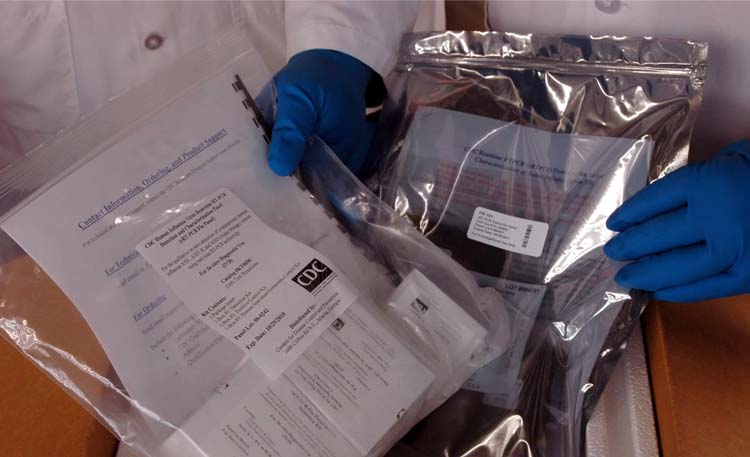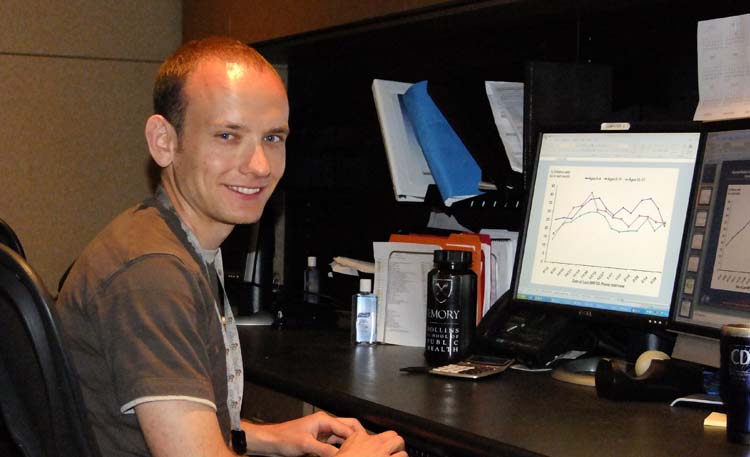2009 H1N1 Pandemic Image Gallery
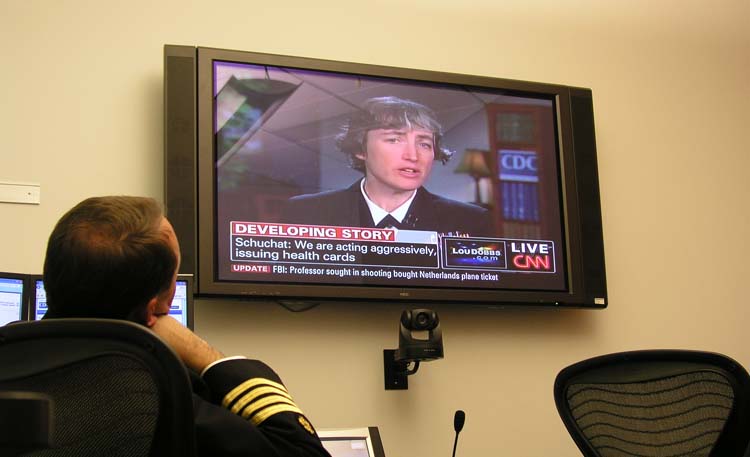
Dr. Anne Schuchat appears on CNN to provide updates on the response to the 2009 H1N1 pandemic while Dr. Daniel Jernigan, who lead the response’s Epidemiology and Laboratory Task Force, watches. Dr. Schuchat was part of the leadership team that guided CDC’s 2009 H1N1 influenza pandemic response, often acting as the face of CDC, explaining developments and keeping the public up-to-date on the pandemic situation.
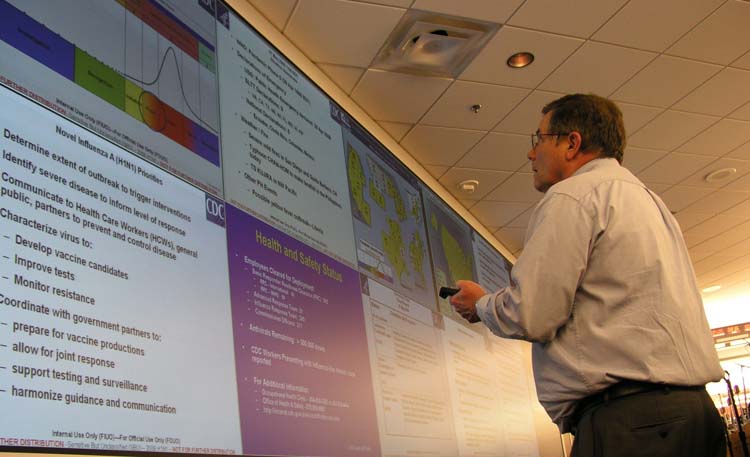
A flu fighter examines the Central Operating Picture (COP) inside CDC’s Emergency Operations Center. During the 2009 H1N1 pandemic, the COP kept responders inside the EOC updated on nearly every aspect of the outbreak.
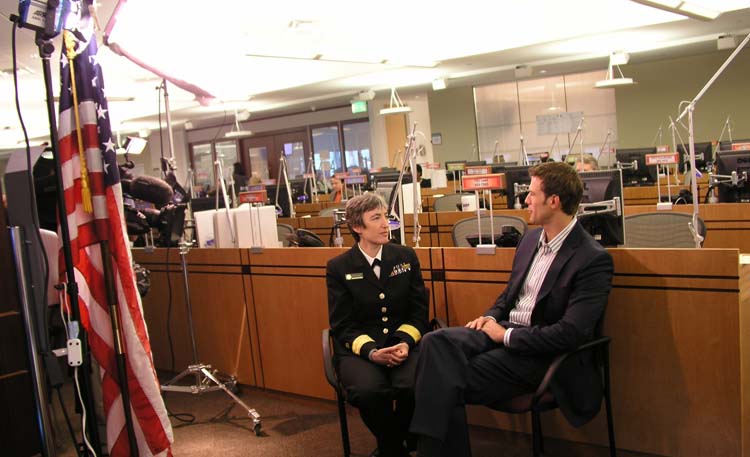
Dr. Anne Schuchat, MD, RADM, USPHS, RET, left, sits for an interview with Dr. Travis Stork from ABC’s The Doctors. Dr. Schuchat was part of the leadership team that guided CDC’s 2009 H1N1 influenza pandemic response, often acting as the face of CDC, explaining developments and keeping the public up-to-date on the pandemic situation.

A Centers for Disease Control and Prevention (CDC) laboratory technician performs genome sequencing to compare the genetic sequences of vaccine viruses with those of circulating viruses. This is one way to assess how closely related the circulating influenza viruses are to the viruses the influenza vaccine is formulated to protect against.
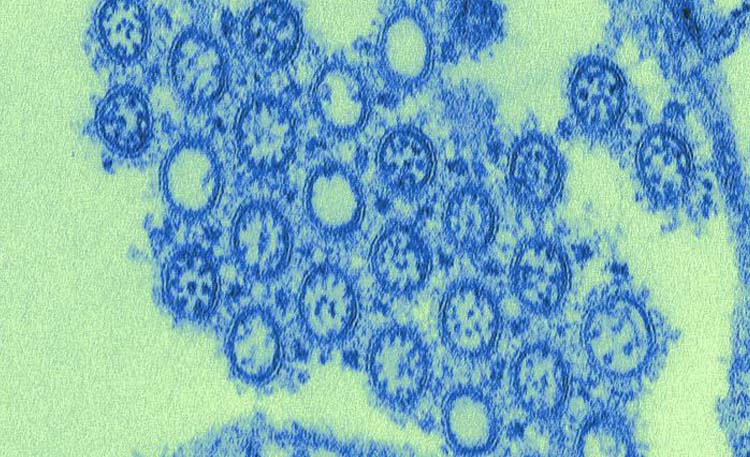
This highly-magnified, digitally colorized transmission electron microscopic (TEM) image depicts a number of virions from a novel influenza H1N1 isolate, the virus responsible for the 2009 pandemic.
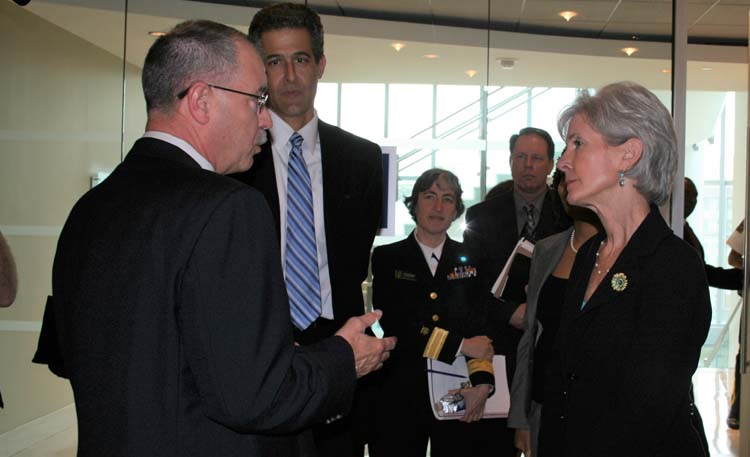
Former Secretary of Health and Human Services Kathleen Sebelius, right, tours CDC’s Emergency Operations Center during the response to the 2009 H1N1 pandemic and receives a briefing from Phil Navin, former director of the EOC. During the 2009 pandemic, the EOC gave CDC flu fighters and partners a place to exchange information and make decisions quickly.

Dr. Stephen Redd, MD, RADM, USPHS, served as the Incident Commander during the response to the 2009 H1N1 Pandemic.
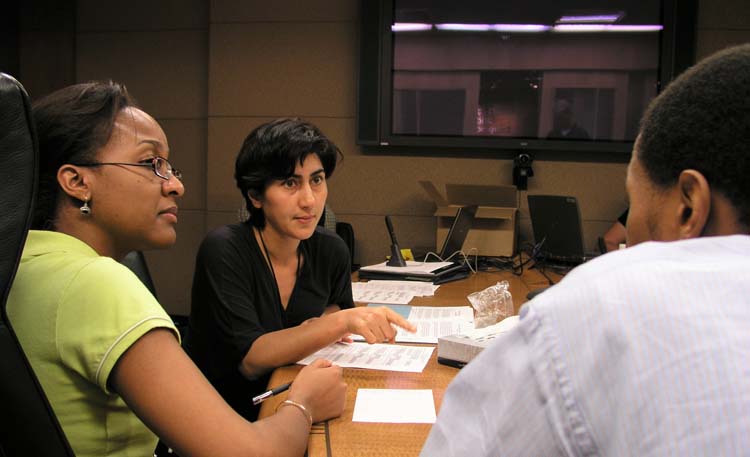
During the 2009 H1N1 Pandemic, surveillance teams gathered community surveys to help learn how the virus was spreading through communities. This information helped tailor the responses to the outbreak.

During the response to the 2009 H1N1 pandemic, many flu fighters were stationed in the Emergency Operations Center (EOC) at CDC headquarters in Atlanta. During the 2009 pandemic, the EOC gave CDC flu fighters and partners a place to exchange information and make decisions quickly.
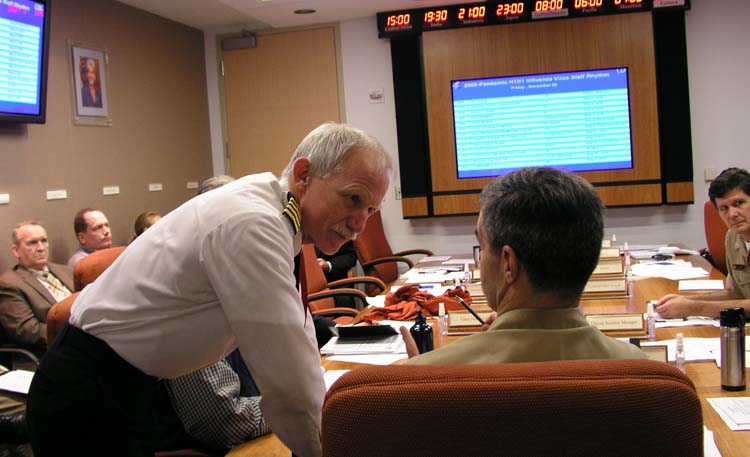
Members of the 2009 H1N1 Pandemic response leadership team meet in the executive conference room inside CDC’s Emergency Operations Center. The executive conference room in the EOC gave the Incident Commander, Task Force leaders and other leadership the opportunity to discuss updates and courses of action in response to the outbreak.
